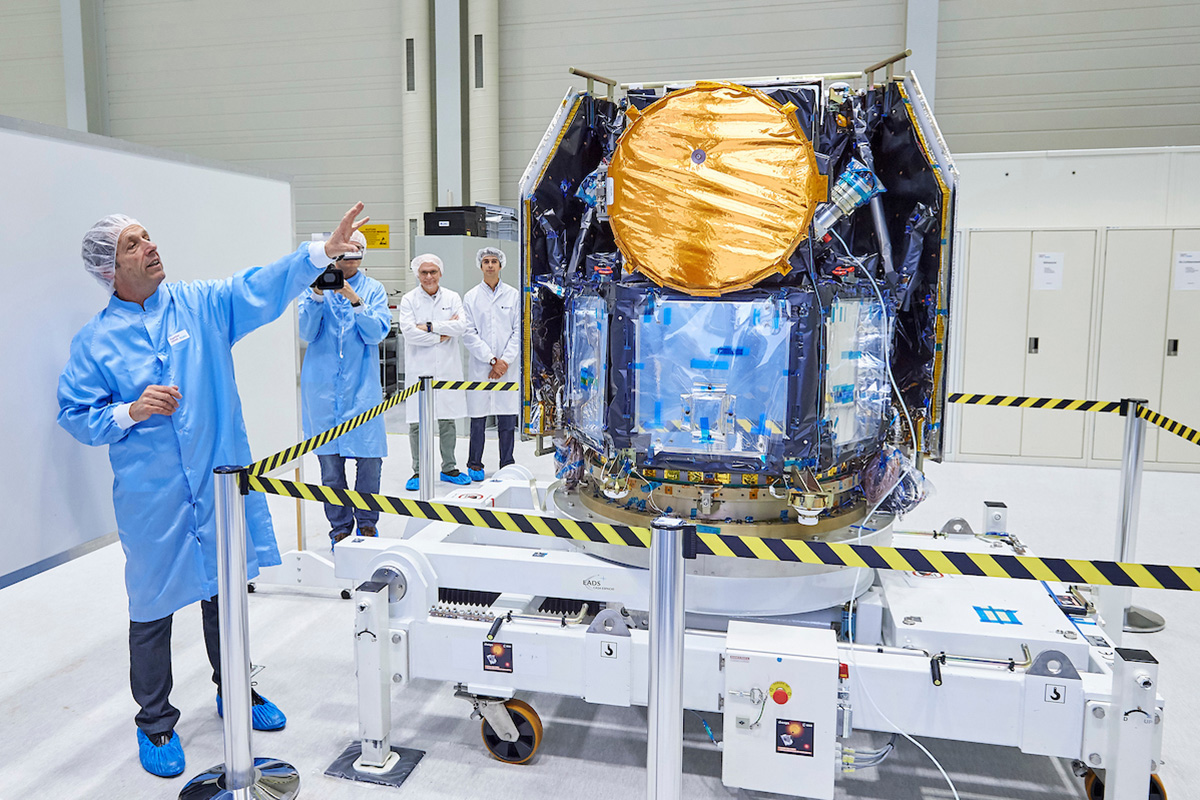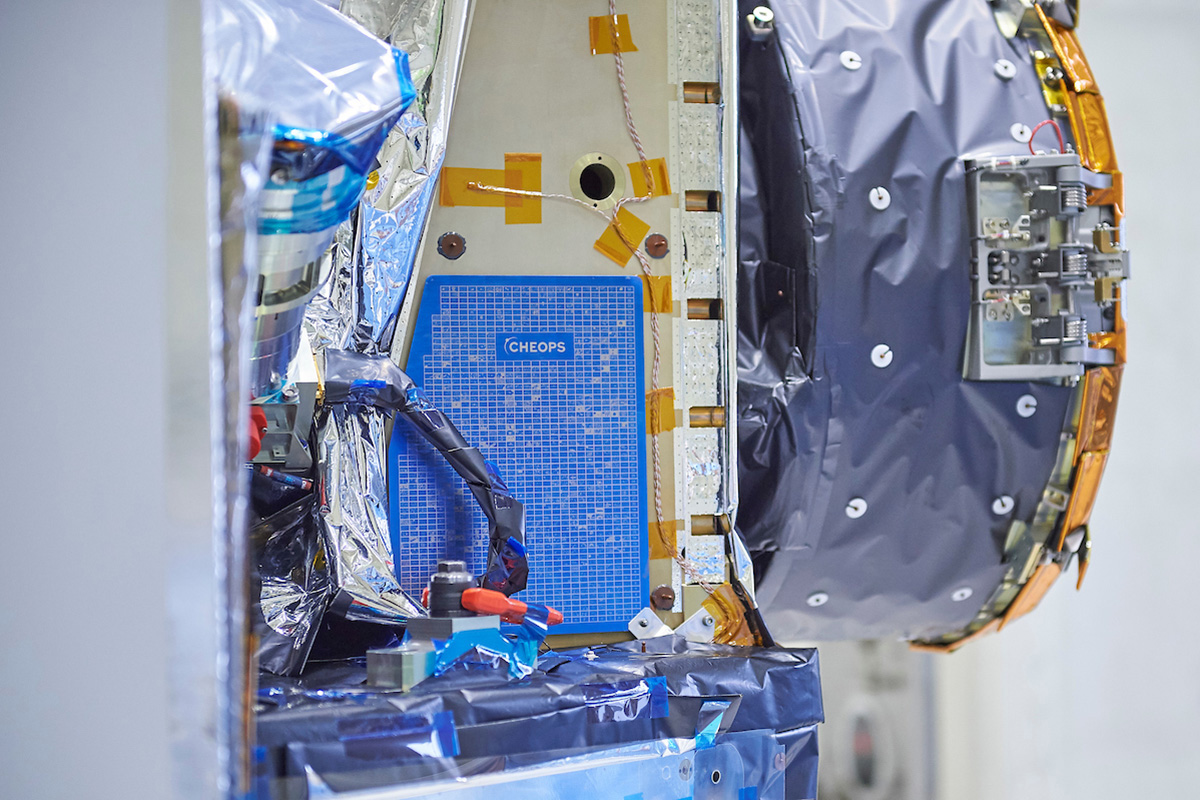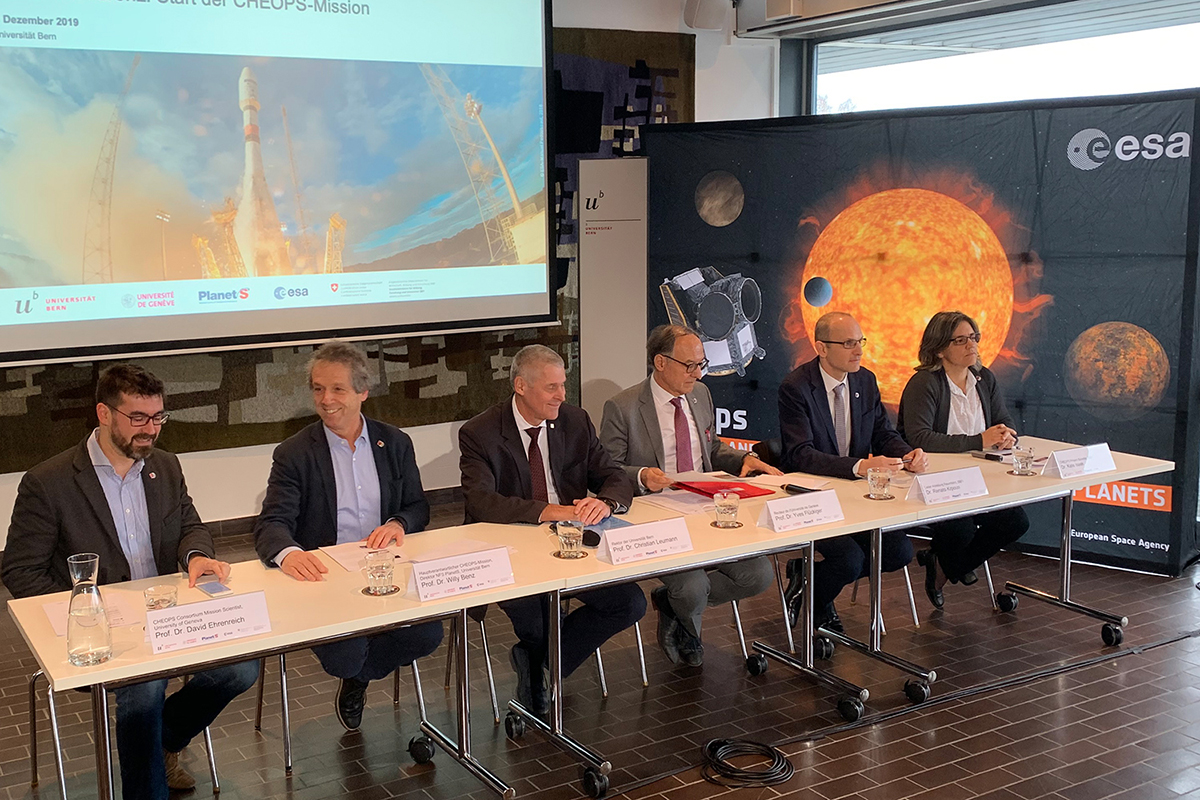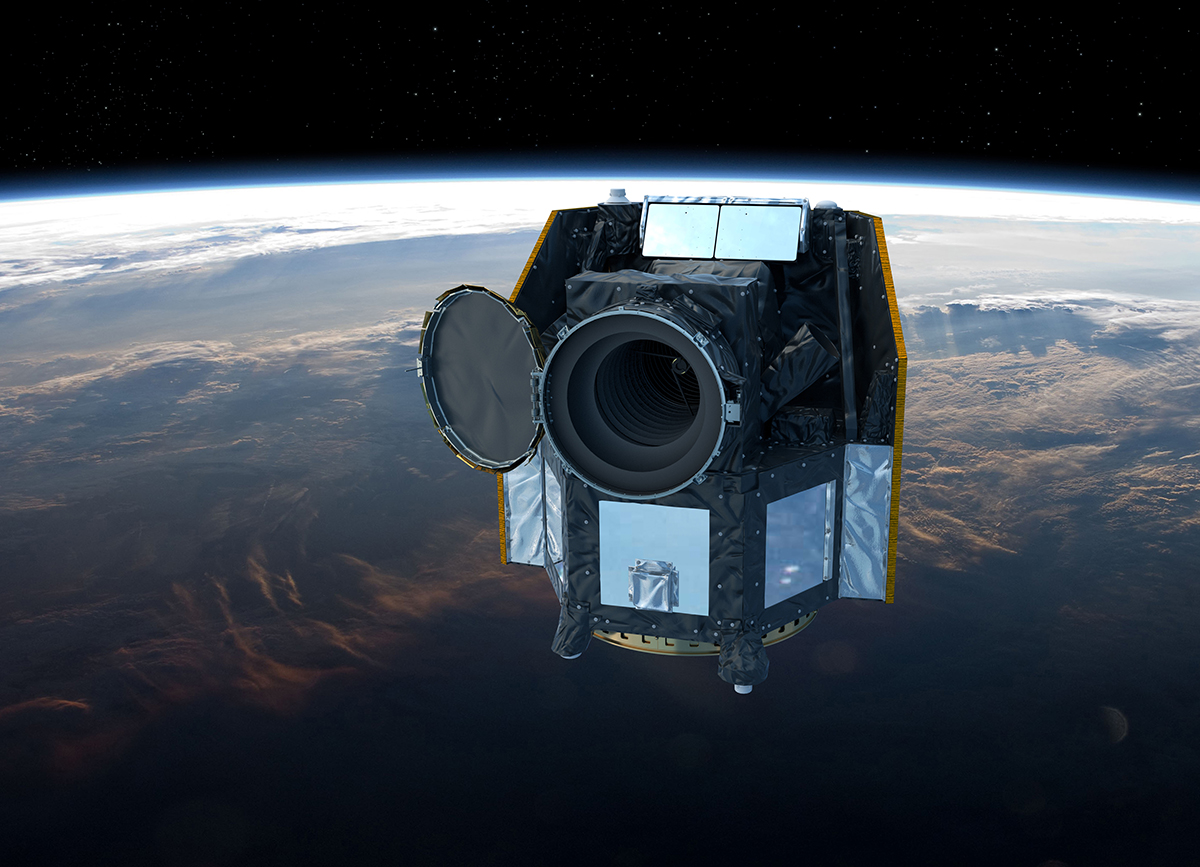Bernese space exploration
Part of the world's elite since the first moon landing
When Buzz Aldrin became the second man to step out of the lunar module on July 21, 1969, the first thing he did was to unfurl the University of Bern’s solar wind sail and plant it into the ground on the moon, even before doing the same with the American flag. This Solarwind Composition Experiment (SWC), which was planned and evaluated by Prof. Dr. Johannes Geiss and his team at the Physics Institute of the University of Bern, was a first major highlight in the history of Bernese space exploration.
Bernese space exploration has been part of the world’s elite ever since. When viewed in terms of figures, it reveals an impressive balance sheet: Instruments have flown into the upper atmosphere and ionosphere with rockets 25 times (1967-1993), into the stratosphere on balloon flights 9 times (1991-2008), more than 30 instruments have accompanied space probes on their missions, and with CHEOPS, the University of Bern is sharing responsibility with ESA for an entire mission.
The successful work of the Department of Space Research and Planetary Sciences at the University of Bern’s Physics Institute was consolidated by the founding of a university competence center, the Center for Space and Habitability (CSH). The Swiss National Science Foundation also awarded the University of Bern the National Centre for Competence in Research (NCCR) PlanetS, which it manages together with the University of Geneva.



